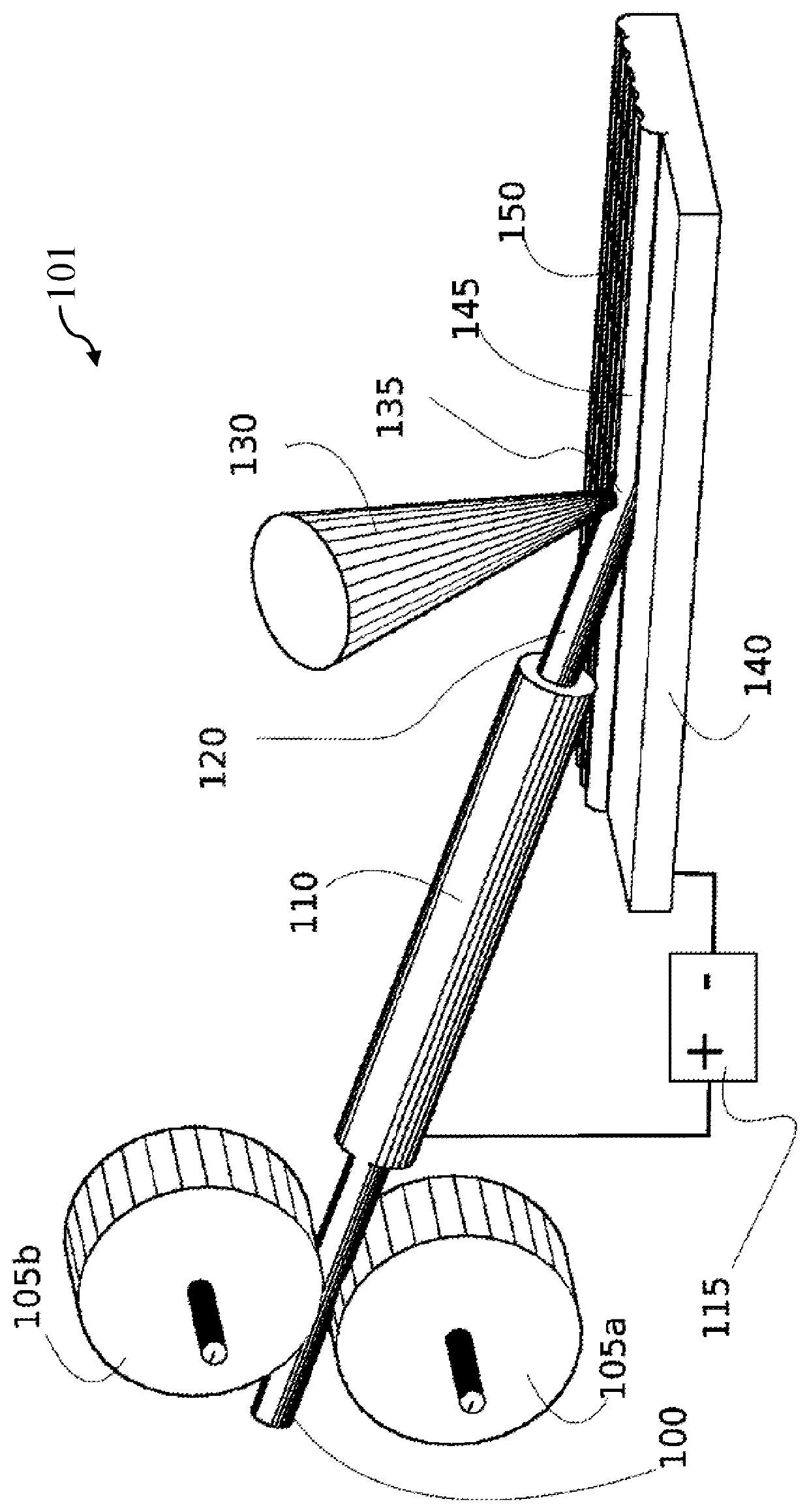System and method for depositing a metal to form a three-dimensional part
a three-dimensional part and metal technology, applied in the field of 3d printing, can solve the problems of not being able to withstand high stress or high temperature, the temperature limitation of these materials remains, and the material limitations of sla printers are different, so as to reduce the time per part, reduce the cost of the machine, and reduce the risk of handling. , the effect of reducing the time per par
- Summary
- Abstract
- Description
- Claims
- Application Information
AI Technical Summary
Benefits of technology
Problems solved by technology
Method used
Image
Examples
Embodiment Construction
[0024]FIG. 1 is an elevated side view of the system according to embodiments of the invention. The system 101 includes feedstock wire 100 is moved by drive rollers 105a and 105b. The feedstock wire 100 passes through the wire guide and electrical contact tube 110. A power supply 115 supplies a controlled amount of current through the contact tube 110, the feedstock wire 100, through a workpiece 140, with the current returning to the power supply 115.
[0025]The required amount of current for a wire 0.006 inches (about 150 microns) is very moderate—only about six to nine amperes, at a nominal 1 Kg / hour deposition rate for steel, and far, far below the tens to hundreds of amperes that would be used for processes such as MIG welding or MIG cladding.
[0026]The ohmic heating supplied in section 120 of the feedwire 100 is intentionally insufficient to melt the wire. Instead, the wire 100 continues to a laser beam 130 supplied by a laser 130, focused at the intersection of the hot wire 100 an...
PUM
| Property | Measurement | Unit |
|---|---|---|
| diameter | aaaaa | aaaaa |
| circuit voltage | aaaaa | aaaaa |
| ultimate tensile strengths | aaaaa | aaaaa |
Abstract
Description
Claims
Application Information
 Login to View More
Login to View More - R&D
- Intellectual Property
- Life Sciences
- Materials
- Tech Scout
- Unparalleled Data Quality
- Higher Quality Content
- 60% Fewer Hallucinations
Browse by: Latest US Patents, China's latest patents, Technical Efficacy Thesaurus, Application Domain, Technology Topic, Popular Technical Reports.
© 2025 PatSnap. All rights reserved.Legal|Privacy policy|Modern Slavery Act Transparency Statement|Sitemap|About US| Contact US: help@patsnap.com

